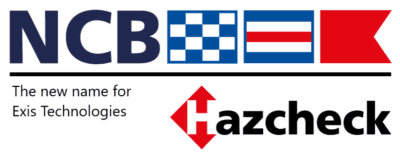Inner packaging and politics – Hazardous Cargo Bulletin
DECLARATION Some topics are best avoided in a conversation among friends. When those ‘friends’ are deepsea container lines and their shipper clients, a conversation on inner packaging can get heated. Tim Gossett* tries to bust some myths.
The correct type of inner packaging is critical for safety, but declaring the nature of the inner packaging is not mandatory under the International Maritime Dangerous Goods (IMDG) Code. Indeed, Amendment 35-10 of the Code, which became mandatory at the start of 2012, added a note at 5.4.1.5.1 to clarify that declaring inner packaging information is not mandatory:
The number, type and capacity of each inner packaging within the outer packaging of a combination packaging is not required to be indicated.
This note was added on the prompting of an association of ocean carriers, most of whose members use Exis Technologies software, such as the Hazcheck system.
The issue of providing inner packaging details had been ambiguous in previous Amendments of the Code, with carriers and some competent authorities requiring shippers to supply this information on shipping documents.
Shippers regularly complain that some lines or ports require declaration of the inner packaging and that this slows the booking process, adds expense, and complicates the process. In particular, it was stated during COSTHA’s annual forum this past April in San Diego that Hazcheck systems require declaration of inner packaging information: this is incorrect. Hazcheck systems allow for inner packaging declaration, but the field is optional and the system default is not to require it. It is up to the carrier, authority, or port to configure their system to be consistent with their policy. If inner packaging information is entered, it will be validated by Hazcheck systems against the IMDG Code. The inner packaging details are not required by any of the off-the-shelf Hazcheck products to validate a load.
This is consistent with the understanding that any company is free to establish its own policy that is more restrictive than the regulations. Since inner packaging is a critical component of containing risks presented by dangerous goods, it is entirely logical and reasonable that some carriers or authorities should want to check it.
Exis Technologies maintains a neutral position on the subject and considers any mandatory requirement of this information to be a decision of the customer.
Not the only issue
There are differences in practice between regions. In Europe, as a matter of custom and practice, many lines require a shipper to declare the number of outer packagings and only the type of inner packing, for example: “10 fibreboard boxes, inner packaging glass receptacles”. For limited quantities, some European lines also require the number of inner packagings on the grounds of safety, but accept dangerous goods from the US without this information. Lines require both gross and net weights as many ports base their limits on net weights – Jeddah and Singapore are examples.
The situation is different in the US where shippers quite correctly say it is not a requirement to state the type or quantity of inner packagings. Only the total number and their gross weight are required.
The issue of inner packagings is not the only complaint that shippers have. Some lines will check technical names against a list they maintain and will ask for a safety data sheet (SDS) if there is no match. Some will refuse a booking if they deem the stated chemical not to be classified correctly. Many lines will insist on an emergency phone number for every shipment globally, as required in the US. These are all perfectly reasonable safety measures, even if not mandated by the regulations
Some deepsea container lines have also found themselves in the same jam as shippers. Smaller feeder lines will carry a container for the last leg of a route to a port at which the deepsea line does not call. If the feeder line requires inner packaging information as a condition of carriage, then the deepsea line must acquiesce. In some cases, such policies will not surface until after the deepsea line has already accepted the container from the shipper.
These policies go far beyond the regulatory requirements imposed on carriers, and they are driven by carriers’ efforts to improve safety. The effect of such policies, however, can often be increased friction in the booking process and expense incurred by the shipper to collate information. One shipper has estimated that such collation could be costing it millions of dollars.
Shippers assume liability for any result of non-compliance when they provide transport documentation that certifies compliance. However, many shippers overlook the certification they have provided, and rely instead on the carrier to detect any problems. This introduces a risk that carriers are compelled to mitigate.
To be clear: software is not driving this issue. Rather, it is down to the policies of certain carriers. Software only mirrors the policies already established. Conversation should continue, unpleasant though it may be, in order to find a way forward. When the policy is settled, then the software will follow.
Are we still friends?
*Tim Gossett was sales and marketing manager for American Nautical Services (ANS) of Fort Lauderdale, Florida. This role has now been taken over by Charles Hays. ANS is a regional representative of Exis Technologies.
www.amnautical.com







